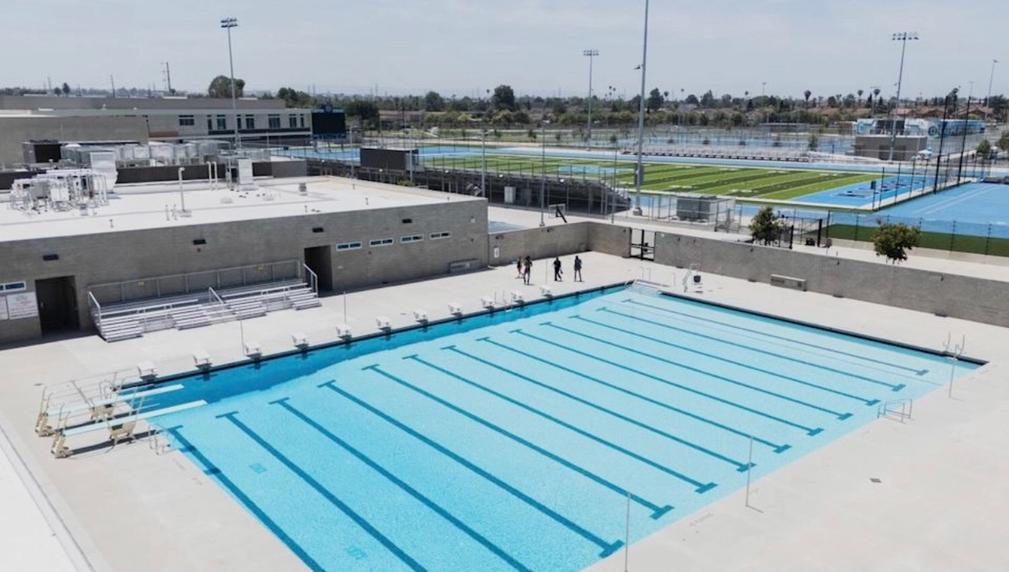Transforming Blue Space into Green Opportunity
Swim Compton activates the brand-new public pool at Compton High School to provide free learn-to-swim programs, junior water polo, and aquatic competitions—while transforming the surrounding greenbelt into a vibrant, multi-use space for family wellness, recreation, and environmental education. This project increases equitable access to both water safety and outdoor green space in a historically underserved community.

What is the primary issue area that your application will impact?
Green space, park access, and trees
In which areas of Los Angeles will you be directly working?
South LA
In what stage of innovation is this project, program, or initiative?
Pilot or new project, program, or initiative (testing or implementing a new idea)
What is your understanding of the issue that you are seeking to address?
Based on our teams experience a water safety advocates ,the issue we seek to address is rooted in generations of exclusion from aquatic spaces for communities of color. In Compton schools, where there hasn’t been a public pool since the 1960s, youth have grown up without access to swim instruction, contributing to disproportionately high drowning rates among Black and Brown children. The lack of access reflects deeper systemic barriers-economic, cultural, and historical-that have kept families from water safety and recreation. Swim Compton aims to change that by transforming the new pool at Compton High into a hub for free swim lessons, junior water polo, and community-based aquatic programs. We pair physical safety with emotional safety by incorporating trauma-informed instruction, anti-bullying lessons, and culturally affirming spaces, ensuring that children in Compton feel safe, confident, and proud in the water-and that their community has equitable access to blue and green space.
Describe the project, program, or initiative this grant will support to address the issue.
Swim Compton is a bold, equity-driven initiative that transforms the brand-new pool at Compton High School into a safe, inclusive, and vibrant community resource—offering free swim lessons, junior water polo, aquatic competitions, and family wellness activities for Compton Unified students, their families, and local community members. This marks the first pool in Compton Unified since the 1960s, and its opening presents a historic opportunity to address systemic inequities in access to water safety, physical activity, and green space.
Swim Compton tackles disproportionately high drowning rates among Black and Latino youth. Surrounding the pool is a newly developed greenbelt, which Swim Compton will activate through “Swim & Stretch” classes, environmental education days, and inclusive family events that promote wellness and belonging.
Swim Compton also prioritizes community safety—not only by teaching water safety skills but by embedding emotional wellness, anti-bullying strategies, and trauma-informed instruction into every program session. Partnerships with local colleges and hospitals will ensure high-quality delivery and long-term sustainability. Through our facilities agreement with Compton Unified, we have approval to move forward and institutionalize this program as a permanent resource.
Swim Compton reimagines both blue and green space as essential tools for equity, safety, and joy-connecting a historically underserved community to health, heritage, and hope.
Describe how Los Angeles County will be different if your work is successful.
If Swim Compton is successful, Los Angeles County will be a safer, more equitable place where Black and Brown youth have full access to aquatic safety, recreation, and community wellness. Drowning rates in historically underserved neighborhoods like Compton will decline as more children learn to swim and feel confident in the water. The new pool at Compton High will become a thriving community hub—hosting swim lessons, competitions, and wellness events that activate surrounding green space and foster intergenerational connection. Families will feel a renewed sense of belonging and safety in public recreational spaces. This model of transforming blue and green spaces into culturally relevant, trauma-informed wellness centers can be replicated across LA County—bridging long-standing access gaps, reducing health disparities, and creating vibrant, inclusive environments where all residents thrive.
Approximately how many people will be impacted by this project, program, or initiative?
Direct Impact: 500
Indirect Impact: 2,500